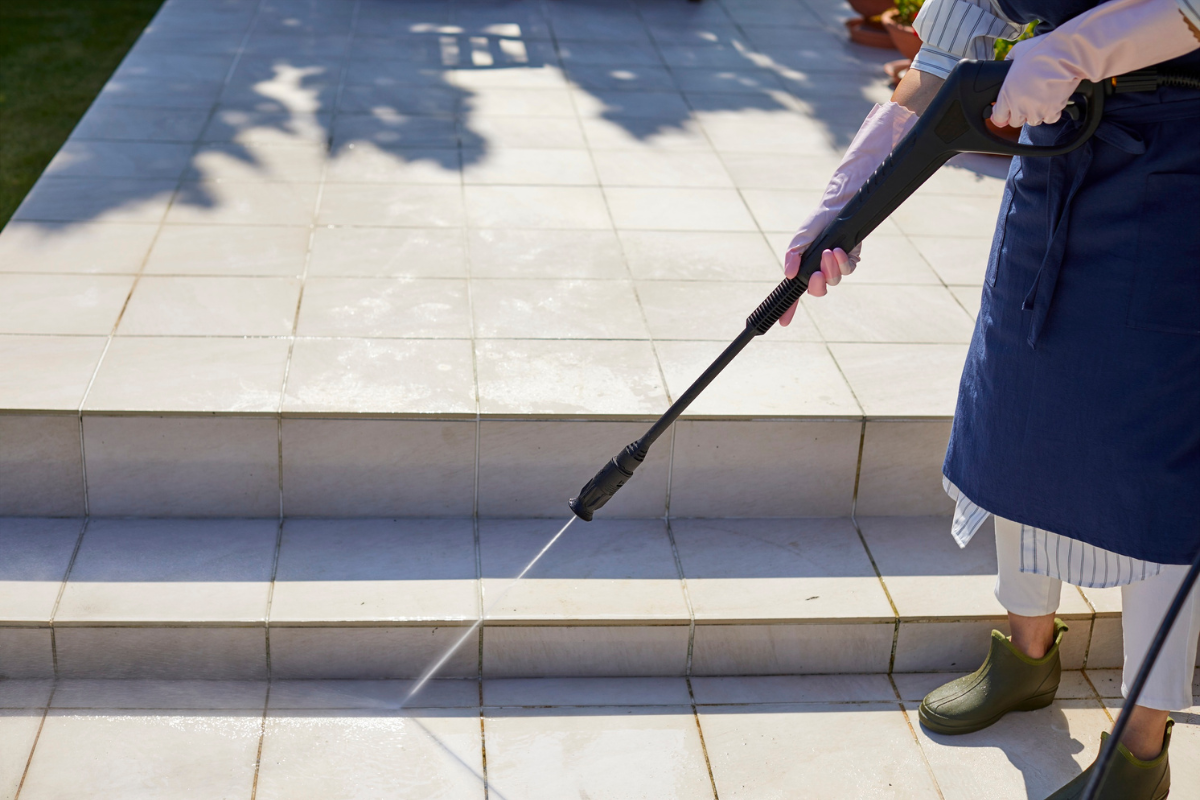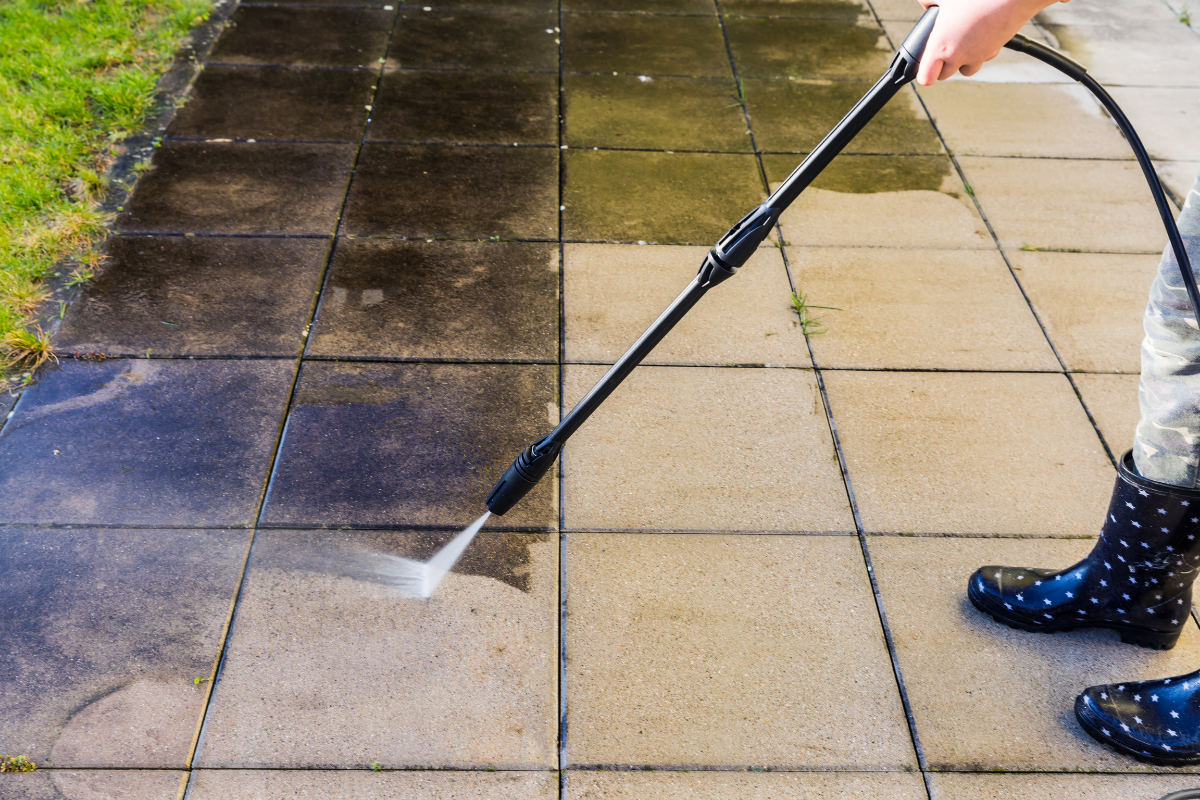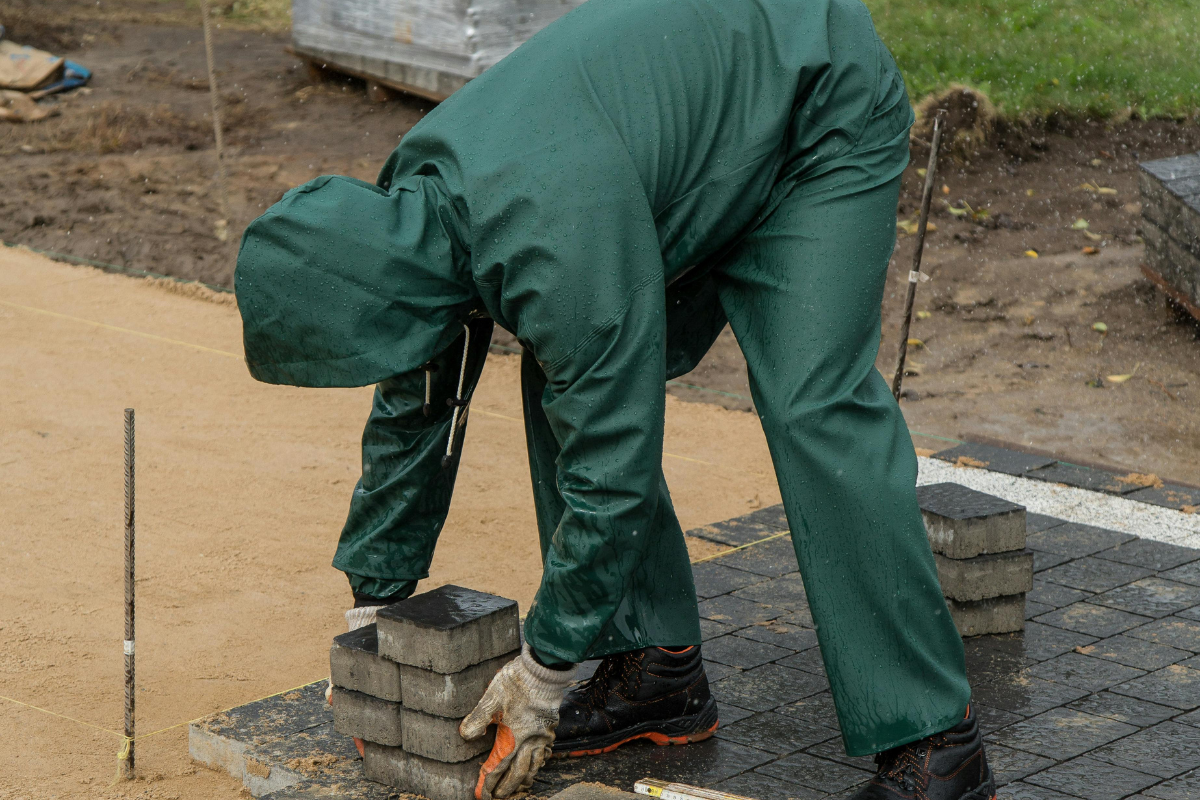
Pressure Washing Service: Scheduling Around Weather Conditions


A well-timed pressure washing service can make a driveway, deck, or paver patio look new again. A poorly timed one can leave streaks, lifted sealer, or a job that needs to be redone at your cost. Weather sits at the center of that difference. The water you apply, the detergents you use, and the sealers you lay down interact with temperature, humidity, wind, and sunlight. Planning around those variables is as much a skill as handling a wand at 3,000 PSI.
I have spent years watching forecasts on two apps, eyeballing cloud ceilings, and touching the concrete to judge surface temperature before starting. The following guidance reflects field realities, not just textbook ranges. It applies whether you run a pressure washing service, schedule residential cleanings, or are a homeowner comparing “driveway pressure washing near me.”
Why the sky matters more than the calendar
Most customers book cleaning around a free day, a party, or landscaping work. Contractors juggle routes and crew availability. Weather sneaks in and reshuffles everything. A resin-based paver sealer behaves differently at 60 percent humidity than it does at 90. Alkaline degreasers lose punch if they flash dry in full sun. Even the simple act of rinsing a north-facing driveway at noon can become a smear job when a sea breeze kicks up dust.
Weather is not a binary go or no-go. It sets a dial for risk and quality. The goal is to move that dial toward predictable results, especially when you’re washing and sealing. Cleaning has more tolerance, sealing has much less.
Temperature bands and what they mean on the ground
Manufacturers give wide temperature ranges. In practice, the sweet spots are narrower.
Cool weather, 50 to 60 F: Cleaning goes smoothly. Detergents dwell longer without drying out, and oxidation removal on vinyl or painted surfaces is more controlled. Sealing requires patience because cure times stretch. A solvent-based paver sealer may take most of a day to set up enough for light foot traffic. Water-based sealers can turn milky if overnight temps dip and dew settles before coalescence finishes.
Mild to warm, 65 to 80 F: This is the goldilocks band. Concrete dries predictably, degreasers activate quickly, and sealer levels well without flashing. If you are planning paver cleaning Lutz or anywhere along Florida’s Gulf Coast, spring mornings in this range deliver the most consistent outcomes.
Hot, 85 to 95 F: Productivity can jump, but so can the margin of error. Surface temperatures run higher than air temperatures. On a dark paver field, the stones can read 120 F at 2 p.m. Detergents flash, leaving soap shadows. Acrylic or urethane sealers can skin too fast, trap solvents, or leave roller marks. If you must work in this band, start early, shade sections, and cool surfaces with a rinse before applying chemistry.
Extreme heat, above 95 F: Plan to clean only. Skip sealing unless you can control surface temperature with shade and timing. The risk of blistering, whitening, or uneven gloss is high. Crews fatigue faster, and mistakes multiply when people rush to beat the heat.
Cold snaps: Below 45 F, most water-based products quit behaving reliably. Even solvent-based sealers slow to a crawl. Flash rust on metals becomes a problem, and ice risks appear with early morning water usage. Postpone sealing. If cleaning can’t wait, shorten sections and chase water with air movement to avoid standing puddles.
Humidity and dew point, the quiet deal-breakers
Humidity is more than comfort. It drives how fast water leaves a surface. Dew point tells you where water will condense. A safe rule: if the surface temperature is within 3 to 5 degrees of the dew point, expect prolonged drying or overnight moisture that can haze a fresh coating.
On coastal routes, afternoons often bring humidity spikes. You may start a driveway at 55 percent humidity and finish at 80. That change matters most if you plan to seal later in the day. The paver sealer that laid down crisp and clear at lunchtime can develop a faint blush as moisture fights to escape in the evening. When searching for paver sealing near me, look for contractors who mention dew points in their scheduling notes. It’s a sign they pay attention to cure chemistry, not just convenience.
Sun, shade, and the clock
The position of the sun, not just cloud cover, dictates how quickly detergents and sealers behave on the surface. East-facing driveways roast early. South-facing stucco bakes all day. North-facing shaded walks can remain damp long after you think they’re ready to seal.
I schedule large, full-sun slabs for early morning. I plan shaded or tree-lined paver fields for midday, after the ambient humidity drops and the ground has released some cool. On mixed exposures, we chase the shade. One of my crew chiefs carries sidewalk chalk to mark sections that will be ready by the time we circle back. It sounds quaint, but those marks save hours of guesswork.
Rain, wind, and the real meaning of a 40 percent chance
Forecasts are murky. A 40 percent chance can mean a dry day with one rogue cell that happens to sit on your job. The risk varies by season. In Florida’s summer pattern, storm windows open midafternoon. Morning cleaning can still work, sealing rarely does unless you finish by noon and clouds hold. In shoulder seasons, a cold front with embedded showers can ruin both, then clear into perfect drying conditions behind it. Learning your local patterns matters more than the icon in your app.
Wind looks harmless at 8 to 12 mph until you atomize surfactant and it drifts onto a neighbor’s black truck. Wind also accelerates drying, which can help or hurt. On a breezy, low-humidity day, rinse lines disappear fast, but sodium hypochlorite loses bite as it evaporates. On a calm, high-humidity morning, chemicals dwell longer, then stubbornly refuse to rinse clean. Adjust dwell times and mix strengths based on the feel of the breeze, not just the number.
Cleaning versus sealing: different weather thresholds
Cleaning tolerates imperfection because you can work small, adjust chemistry, and rinse until the rinse water runs clear. Sealing has a narrower lane. The surface must be clean, dry, and within a tight temperature and humidity band for several hours.
Concrete driveways: After a typical wash in moderate conditions, plan on 2 to 6 hours of dry time before sealing. Over dense or shaded concrete, double that. For customers asking about driveway pressure washing near me with same-day sealing, I explain that it is possible in the right weather and wrong in the wrong weather. I would rather schedule sealing a day later than trap moisture and create sealer hazing that takes days to resolve.
Clay and concrete pavers: Their joints hold moisture. Even after a thorough rinse, water wicks up as the sun warms the field. In Lutz and similar climates, a morning paver cleaning often sets the stage for late afternoon sealing if the breeze stays steady and humidity remains moderate. In muggy conditions, let it breathe overnight. When paver sealing is rushed on damp joints, white blush blooms under solvent-based products, and water-based coatings can lose clarity.
Travertine and natural stone: Porosity varies across a patio. Edge stones and interior stones may absorb differently. Pre-wet, then test. Solvents off-gas more slowly in high humidity over dense stone, so late-day sealing can trap vapors, especially under furniture feet where air movement is low.
Dew and overnight risks
Dew creates more callbacks than rain. A shower is obvious and prompts rescheduling. Dew sneaks in at 3 a.m., settles on a freshly sealed surface, and leaves a milky cast at dawn. If the forecasted overnight low sits near the dew point, I stop sealing by midafternoon and prioritize faster-drying products. Better, I push application to the next dry window. If a customer insists because an event looms, I walk them through the risk and get agreement in writing.
Picking your window in a place like Lutz
Lutz, north of Tampa, sees summer thunderstorms, sea breezes, and humidity that runs high from June through September. Winter brings crisp mornings that can dip into the 40s and warm quickly into the 60s or low 70s. For paver cleaning Lutz and sealing work, my best windows have been:
- Late October through April for sealing, especially late mornings to early afternoons on dry, sunny days with humidity below 65 percent.
- Summer mornings for cleaning only, saving sealing for rare days when a dry, stable air mass lingers after a front.
- Post-front days any time of year. When the wind swings north and dew points drop, surfaces dry like a dream, and coatings cure with fewer surprises.
Those patterns shift year to year, so pair them with on-the-ground checks: touch the surface, check shaded corners, and measure with a moisture meter if in doubt.
Ground checks that beat any forecast
Forecasts give direction, not certainty. Five small habits raise your batting average:
- Feel the surface. If your palm cools and stays damp, water is still evaporating. Wait on sealing.
- Watch the sheen. A uniform matte look across concrete suggests it is drying evenly. Patchy darker zones often hide moisture.
- Carry a thermometer and hygrometer. Pocket devices read surface temperature and relative humidity. Compare with the sealer’s product data sheet.
- Use a moisture meter for dense surfaces. Even a basic concrete meter can flag wet joints after paver cleaning.
- Track the dew point trend. If the spread between air temperature and dew point is widening through the afternoon, your drying window is improving, not closing.
These checks take minutes. They protect your margin.
Chemistry choices that widen the weather window
When scheduling is tight, product selection gives you room. Solvent-based acrylics tolerate marginal conditions better for clarity, but they off-gas more and are sensitive to heat on application. Water-based sealers can be kinder to the environment and easier to clean up, but they need tighter humidity control during film formation. Some hybrid urethane blends offer crosslinking in humid conditions, but they require precise timing and thin coats.
Make sure the paver sealer you choose matches both the surface and the day. On a breezy, dry winter afternoon, a solvent-based acrylic lays down fast and clear on pavers. On a warm spring day with mild humidity, a high-solids water-based product can deliver a rich, natural finish without much odor. Always read the product’s minimum and maximum surface temperature, not just air temperature. If you handle many jobs marketed under paver sealing near me, keep two to three product families on the truck to match conditions in real time.
Sequencing work on variable days
Mixed weather demands a flexible order of operations. On days with a late-day storm chance, clean early and push sealing up on the schedule or onto another day. On cool mornings with rising warmth, clean shaded areas first, then return for sealing once they have dried. If wind will kick up after lunch, spray penetrating treatments earlier and roll topcoats later to reduce atomization and drift.
Routes also matter. Group jobs by exposure and product type. A day of driveway pressure washing near me with no sealing holds up better against surprise breezes than a day packed with delicate deck staining and paver sealing. When you bundle sealing jobs, leave setup gaps between them so you can reschedule one without collapsing the whole route.
Managing customer expectations and advance booking
Weather wiggles are easier when customers understand the “why.” I keep a short explanation handy: we want your surface to cure hard and clear, and that requires a dry window before and after application. If the forecast tightens, we will adjust to protect the finish.
Booking with weather in mind looks like this. Reserve a target week, not a fixed day, for sealing. Confirm two days ahead when a reliable forecast window appears. For cleaning-only appointments, hold your date but warn about same-day time shifts for wind or storms. If your business relies on online discovery, like customers searching pressure washing service or paver sealing near me, include a brief weather policy on your site and in confirmation emails. It sets a professional tone and reduces friction when you need to pivot.
Edge cases and judgment calls
There are times to go and times to pack up.
A surface reads dry, but a shaded strip at the base of a wall remains darker. You can seal the field and cut in that strip later, but you risk lap lines. Better to wait, or warm that section with airflow until the tone matches.
A passing shower wets only part of a long driveway. Cleaning can resume once the rain stops, but sealing that day becomes dicey. The washed portion will dry faster than the rained-on section, producing uneven cure. If the job is remote and rescheduling is costly, finish the wash, then spot test the slowest-drying area. If it fails the tape pull after a few hours, move sealing to another day.
The wind holds under 10 mph, but gusts spike to 20. Spraying a solvent topcoat becomes a drift hazard. Roll instead, or switch to a product that tolerates a heavier, brushed edge and rolled body. Keep a tarp handy to shield cars if a gust surprises you.
A tropical system lingers offshore. The forecast swings every six hours. Clean tight sections only and avoid any sealer until the system clears. The hidden cost of a callback after a weather-ruined finish is higher than the day you save by pushing through.
Safety, equipment, and crew well-being
Weather is not just about chemistry. On hot days, crews wear cooling towels, rotate tasks, and keep electrolytes on hand. Heated surfaces can burn hands when moving hoses. In cold snaps, hoses stiffen and wand triggers fatigue wrists faster. A tired tech is more likely to miss a rinse line or over-apply sealer.
Equipment behaves differently too. Pumps cavitate in heat when drawing from tanks with warm, aerated water. In cold, seals shrink and drip. Carry spares, check fittings, and keep hoses out of direct sun when staged. If product temperature matters for viscosity, store paver sealer in the shade or in a climate-controlled space until use. Warm a water-based sealer gently by keeping it in the cab on a cool morning so it flows and levels as intended.
Local microclimates and surfaces that mislead
Every neighborhood has quirks. A lakeside home runs cooler in the morning and damper all day. A cul-de-sac how long does paver sealer last that funnels wind dries faster. A newly built driveway might look smooth and ready but still hold moisture deep within because the base was compacted over wet soil. Your eyes are not always enough.
For paver cleaning, sanded joints slow drying. A polymeric sand install needs a truly dry forecast for activation and curing. If the joints feel cool and tacky after a rinse, they are not ready for sealer. Give them time. Rushing here creates a gummy mess that you will spend a day fixing with hot water and agitation when the customer wonders why the joints turned soft.
When to reschedule without regret
If air temperature and dew point converge within a few degrees overnight, and you cannot finish sealing by midafternoon, move the job. If humidity sits above 85 percent with no breeze and temperatures are falling through the day, postpone sealing. If wind gusts exceed 20 mph in open areas, avoid atomized applications. And if radar shows a line of storms that cannot be outrun, do not gamble a topcoat against the clock.
Customers appreciate candor when you explain that their finish depends on a dry synoptic window. That phrase sounds technical, but it communicates reality. A good pressure washing service does not just blast and brush. It plans for weather, returns when conditions favor a lasting result, and stands behind the work.
A brief, practical checklist for scheduling decisions
- Confirm surface temperature, air temperature, relative humidity, and dew point at the job site before sealing.
- Prioritize morning cleaning, midday sealing, and finish sealing by midafternoon if dew risk is high.
- Adjust product choice to conditions, keeping at least one water-based and one solvent-based paver sealer on hand.
- Monitor wind forecasts and switch from spray to roll when drift becomes likely.
- Communicate clearly with clients about flexible windows for sealing versus firm dates for cleaning.
What to expect from a weather-savvy contractor
When you search driveway pressure washing near me or paver sealing near me, look for signs of weather literacy. Do they mention dry times, dew point, and cure windows, not just PSI and square footage? Do they carry moisture meters and talk about shading delicate areas? Have they done paver cleaning Lutz often enough to know when summer storms build over the bay?
A contractor who reschedules a sealing appointment to protect your surface is saving you money, not dodging work. A company that trains crews to feel the difference between cool and clammy concrete will deliver better results than one that aims for speed. Weather adds complexity to pressure washing and sealing, but it also offers opportunity. The best days produce better finishes with less effort. The worst days punish shortcuts.
In the end, scheduling around weather conditions turns a simple service into a craft. It respects the chemistry in the bucket, the physics in the air, and the expectations at the door. When those three line up, pavers pop, driveways brighten, and sealers cure clear and even. That is the standard to aim for, and the forecast to build your week around.
Bulletproof Pavers
Address: 1523 Green Meadow Dr, Lutz, FL 33549
Phone: (813) 401-0693